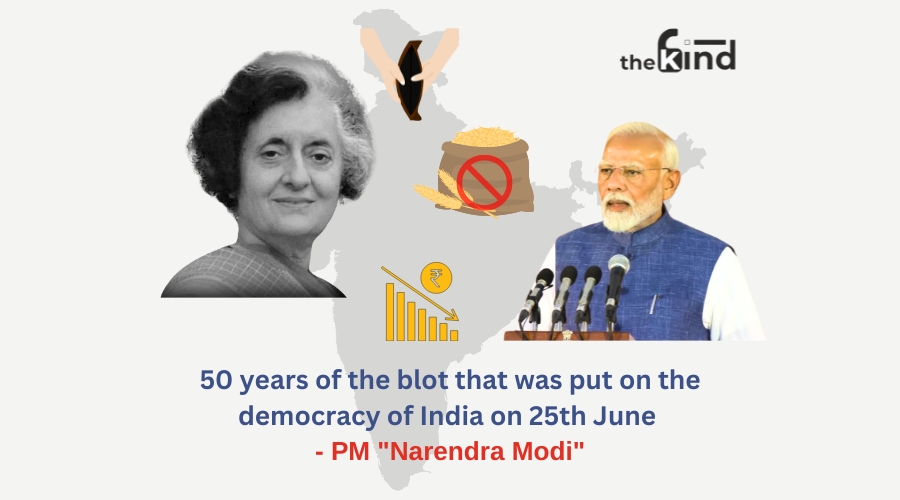Share this
On June 25, 1975, then-Prime Minister Indira Gandhi declared a state of emergency in India, lasting until March 21, 1977. This 21-month period, known as “The Emergency,” is one of the most contentious and transformative episodes in Indian political history. The decision led to widespread changes in the country’s political and social landscape, leaving a lasting impact on Indian democracy.
Background
The seeds of the Emergency were sown in the early 1970s, a turbulent time for India. The country was grappling with severe economic problems, including inflation, unemployment, and food shortages. Political unrest was escalating, epitomized by mass protests and movements such as the Bihar Movement led by Jayaprakash Narayan, which called for a “Total Revolution” against corruption and misgovernance.
The tipping point came on June 12, 1975, when the Allahabad High Court found Indira Gandhi guilty of electoral malpractices and invalidated her 1971 election victory. Facing the prospect of being unseated and disqualified from holding office, Gandhi chose a drastic measure: she advised President Fakhruddin Ali Ahmed to declare a state of emergency, citing internal disturbances.
Implementation and Impact
The declaration of the Emergency granted Indira Gandhi extraordinary powers. Civil liberties were suspended, and political opponents were arrested en masse. Among the most notable arrests were leaders of the opposition, including Jayaprakash Narayan, Morarji Desai, and Atal Bihari Vajpayee. The government imposed strict censorship on the press, effectively stifling dissent and controlling the flow of information.
During the Emergency, significant constitutional amendments were passed, further centralizing power and curbing judicial independence. The most controversial policies included forced sterilization drives led by Sanjay Gandhi, Indira’s younger son, aiming to control population growth. These drives often involved coercion and were met with widespread public resentment.
Public Response and Resistance
Despite the suppression, resistance to the Emergency persisted. Underground movements and international criticism highlighted the undemocratic nature of the regime. Leaders like George Fernandes continued to oppose the government covertly, organizing resistance and raising awareness about the plight of political prisoners.
Public sentiment gradually turned against Indira Gandhi and her party, the Indian National Congress. The draconian measures and human rights abuses alienated a significant portion of the population, including her traditional supporters.
End of the Emergency
On January 18, 1977, Indira Gandhi announced the end of the Emergency and called for general elections in March. The elections resulted in a resounding defeat for the Congress Party, and the Janata Party, a coalition of opposition groups, came to power with Morarji Desai as the Prime Minister. This marked the first time since independence that India was governed by a non-Congress party.
Legacy
The Emergency of 1975-1977 left an indelible mark on India’s democratic fabric. It exposed the vulnerabilities in the country’s political system and highlighted the potential for abuse of power. The period serves as a crucial reminder of the importance of safeguarding democratic principles and civil liberties.
In the aftermath, several legal and constitutional safeguards were instituted to prevent the recurrence of such an event. The 44th Amendment to the Constitution, passed in 1978, made it more difficult for any future government to impose a similar emergency, ensuring greater checks and balances.
Conclusion
The Emergency of 1975-1977 under Indira Gandhi stands as a critical juncture in Indian history, encapsulating the perils of absolute power and the resilience of democratic institutions. It remains a powerful lesson on the need for vigilance in protecting the democratic rights and freedoms that are fundamental to India’s identity.

